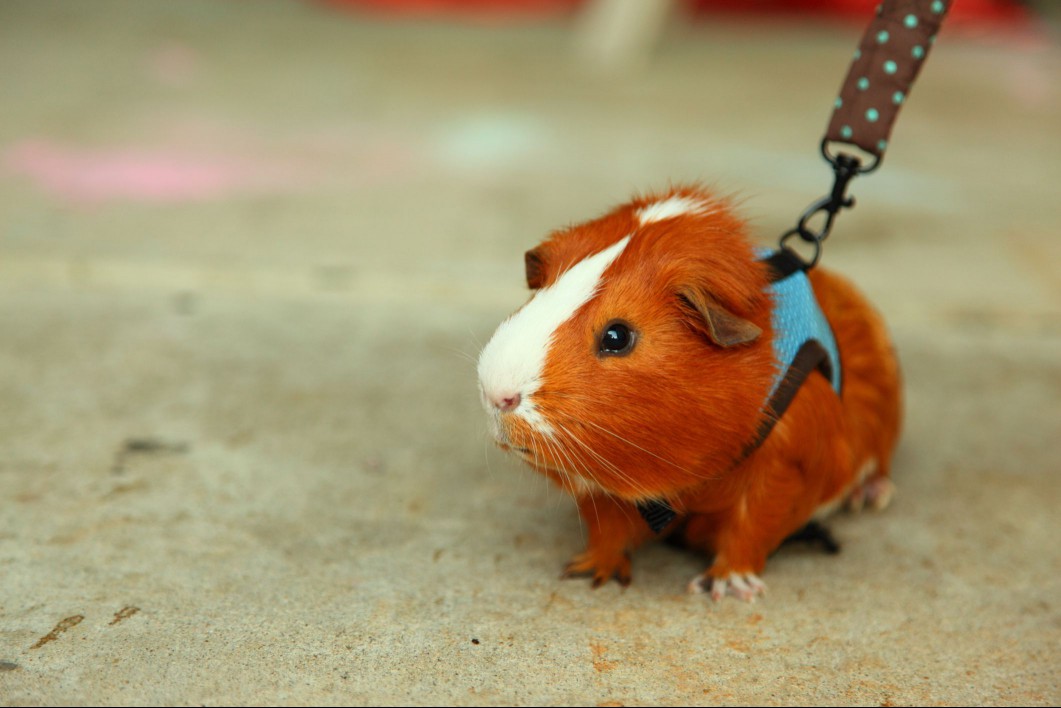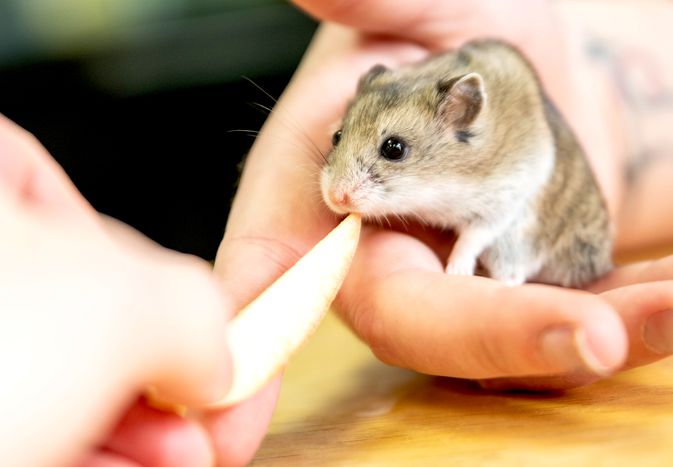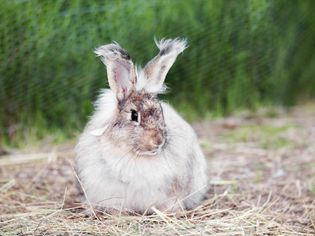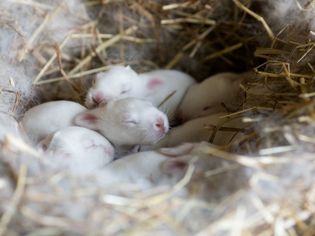Of the 20 species of armadillo in the wild, only a few are kept as pets in the United States, and each has its own unique characteristics. Armadillos are not domesticated pets like cuddly ferrets or puppies; they are wild animals that can be challenging to care for in captivity as they need space to roam and dig, and are active at night.
The most commonly seen type of pet armadillo is the three-banded armadillo, which includes both the Brazilian and southern types. Native to South America, it is the only species of armadillo that can roll into the classic ball that you picture when you think about the animal.
The screaming hairy armadillo is the name for another armadillo kept as a pet, but it is less popular than the three-banded variety. Its name comes from the noise this armadillo makes when handled or threatened, and it also goes by several names, including the screaming armadillo, the dwarf screaming armadillo (due to its small size), the crying armadillo, and the small hairy armadillo. The last type of armadillo that you might happen upon as a pet is the big hairy armadillo, which is the largest of the three pet species.
Species Overview
Common Name(s): Armadillo, three-banded armadillo, Southern three-banded armadillo
Scientific Name: Tolypeutes
Adult Size: 20 to 42 inches long
Lifespan: Up to 30 years in captivity
Can You Own a Pet Armadillo?
Legality
If you do decide that you want an armadillo as a pet, check your local laws first. Armadillos are wild animals, and their status varies from state to state. If your state allows you to own one, and if you're prepared to make your home fit for a burrowing, insect-eating, eight-acre roaming, nocturnal armadillo, be sure to follow all of the local rules for keeping exotic pets.
Ethics
Like with all pets, it's important to consider whether you can provide a pet armadillo with everything they need to thrive before adopting or purchasing one. Armadillos need a great deal of care and require unique habitats and environments, so it will take a good amount of your time, energy, and resources to care for one properly. Making sure you're aware of (and up to) the commitment of ownership is key to ethically acquiring an armadillo.
Things to Consider
Armadillos are nocturnal creatures, so you should make sure you have a spot in your home where they can be allowed to enjoy their nighttime activities undisturbed. If the only option is keeping your armadillo in your bedroom, that might to be a good option for you or them.
Pet Armadillo Behavior and Temperament
Armadillos are generally solitary creatures—in the wild, they only socialize to mate and to raise their young. Therefore, keeping multiple armadillos together can lead to clashes. They are often active at night and need room to roam; cover eight acres of roaming in their territory when out in the wild. They require deep soil to burrow in, along with insects to forage.
If raised in a human environment from a young age, pet armadillos can actually be quite affectionate and calm. They can enjoy being petted or sitting on your lap. However, even a tame armadillo raised in captivity from birth can do some damage to you or your flooring material with its sharp claws as it tries to dig for bugs. Additionally, they can walk on their hind legs, using only their front claws to aid them in balancing. While it may seem fun to make your armadillo curl up in a ball, that's actually a defensive posture for the animal and indicates that it's under duress.
Click Play to Learn More About the Fascinating Armadillo
Housing
Armadillos cannot be comfortably cared for inside a house due to their natural odor which is strong and musky. In warm climates, an armadillo must be kept in a large outdoor enclosure that provides both sun and shade. A small wading pool is a welcome addition as well.
If you live in a cold climate, you will likely have to bring your pet indoors for the winter. However, since armadillos need space to forage and will usually become destructive inside the home, winter home living with this warm-climate species is a near impossibility unless you have an insulated barn or other spacious enclosure. In general, armadillos need their environment to be consistently above 71 degrees Fahrenheit at all times in order to live comfortably.
Specific Substrate Needs
Armadillos enjoy burrowing in the soft ground. If you're not keeping your pet somewhere where this is naturally available to them, make sure you provide large mounds of mulch or mulch mixed with wood chips in which they can burrow.
What Do Armadillos Eat & Drink?
Much like their cousins the sloths and anteaters, armadillos eat insects and small invertebrates like earthworms. If given the chance, armadillos will also eat fruit, eggs, sweet potatoes, and other small vegetables. If you keep an armadillo in an appropriate enclosure, it will use its strong front digging claws to find much of its own food. Check with your exotic animal veterinarian for specific foods to provide your armadillo. Like any pet, armadillos also need constant access to fresh, clean, and clear, non-chlorinated water.
Armadillos have a slow metabolism so some people worry that their pets aren't eating enough—however, your pet most likely has a normal appetite. They also don't have many teeth, so if they are eating something other than worms and insects, it must be made soft.
Common Health Problems
Armadillos are one of the few animals known to carry the bacteria that causes leprosy in humans, though cases of bacterial transmission are rare. Little is known about other diseases that are a threat to armadillos, however, they can also transmit rabies.
Veterinary care is hard to find for these unique animals. Note that armadillos are prone to frostbite due to their slow metabolism. It may be hard even for a veterinarian to spot signs of frostbite on an animal whose outer layering is structured to keep most of its soft tissue hidden.
Exercise
If kept in the proper environment, armadillos will fulfill all their exercise needs on their own. Many zoos also provide their armadillos with exercise wheels, which can also be an option for your pet if you have the necessary room.
Grooming
Armadillos are well-known for their armored plates, which cover the majority of their body. These plates are made of keratin, the same material that your fingernails are made of, and they protect these small mammals from predators by covering their bellies when they curl into themselves. Because of this, armadillos do not need any human grooming, including bathing. However, if you notice the appearance of your armadillo's plates changing in any way (color, peeling, etc.), make sure to let your vet know immediately.
Training Your Armadillo
While armadillos can be sweet and affectionate, they are not particularly known for their intelligence, and thus are not trainable. The most you can expect is an armadillo that is content with being held and pet, which comes with human exposure from a young age. Beyond that, do not expect your pet armadillos to learn any tricks or retain any training.
Purchasing Your Pet Armadillo
You will not want to adopt a wild or adult armadillo, as it will be very difficult to care for and train. Expect to pay $2,000 to $3,000 for a bred and hand-tamed, baby armadillo. Make sure you're purchasing your pet through an accredited breeder, and inquire as to whether they have the proper certificates in place that allow for legal resale in your state or town.
Similar Pets to the Armadillo
If you’re interested in pets similar to an armadillo, check out:
- Anteater Species Profile
- Sloth Species Profile
- Racoon Species Profile
Otherwise, check out other exotic animals that can be your pet.
FAQ
-
Yes. Armadillos are definitely one of the more difficult exotic pets to care for, primarily due to their need for a housing environment that very nearly mimics the one they would experience in the wild.
-
Not really—while you can acquire an armadillo that has been bred for pet ownership, at the end of the day these are wild animals and their needs and behavior will largely reflect that.
-
Armadillos can live up to 20 years in captivity, and will experience a slightly abbreviated lifespan in the wild (closer to 10 years), thanks to natural predators.
Explore more:
- Small Pets
- Exotic Pets
- Exotic Pet Care
Explore Dogs
exotic-pets
2025-12-15
Should You Keep Wallaby as a Pet?
Wallabies may be cute and fascinating animals, but it's illegal to own them in most states, and the...
Read More
ferrets
2025-12-17
Grooming Ferrets
When it comes time for you to groom your ferret, you may need to search wide and low for a specialt...
Read More
ferrets
2025-12-16
Coronavirus in Ferrets
Slinky, mischievous, and intelligent, ferrets are members of the weasel family that love to play an...
Read More
guinea-pigs
2025-12-13
Broken Guinea Pig Legs
Guinea pigs are popular kid's pets for several good reasons, but this doesn't mean they are indestr...
Read More
guinea-pigs
2025-12-18
Eye Infections and Problems in Guinea Pigs
Guinea pigs, like many other exotic pets, are prone to eye problems. There are a variety of disease...
Read More
hamsters
2025-12-17
Hamster Food 101: What Can Hamsters Eat?
Hamsters are cute, small, and relatively easy to care for, and if socialized and handled gently, th...
Read More
rabbits
2025-12-20
Angora Rabbit Breed Profiles
For homesteaders interested in raising angora rabbits for wool production, the show table, 4H, or a...
Read More
rabbits
2025-12-16
5 Kinds of Rabbit Tumors
There are several different types of tumors that can grow on a rabbit. Sometimes these tumors can b...
Read More
rabbits
2025-12-13
Pregnancy in Rabbits: A Guide to Rabbit Gestation
A rabbit's gestation period is typically between 28 and 30 days, but this can vary depending on...
Read More
Stay Updated with Our Newsletter
Get the most important news stories delivered directly to your inbox every morning.








